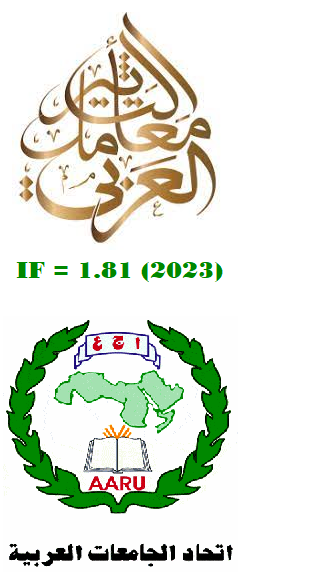Educational Research Issue in English Language Teaching and Learning
A Meta-Analysis
Abstract
English language is considered as the most leading language globally. Previous studies affirmed that English language teaching and learning (ELT) is the most challenging area. A huge number of researches and publications are being published in this area concerning various aspects. Therefore, this study aims to presents a meta-analysis of previously done studies seek to investigate the various aspects in English language teaching and learning. The study is based on qualitative research approach as entire data has been collected from existing journals and research databases. A number of 8 articles have been gathered which have been published from 2012 to 2017. The findings of this meta-analysis provides the value to researcher and academic practitioners as well.
Downloads
References
Alsowat, H. H. (2017). A systematic review of research on teaching English language skills for Saudi EFL students. Advances in Language and LiteraryStudies, 8(5), 30-45.
Brown, D. (2016). The type and linguistic foci of oral corrective feedback in the L2 classroom: A meta analysis. Language Teaching Research, 20(4), 436-458.
Ellis, R. (2010). Cognitive, social, and psychological dimensions of corrective feedback. In: Batstone, R. editor. Sociocognitive Perspectives on Language Use and Language Learning. Oxford, United Kingdom: Oxford University Press.
Ernesto, M, Zoe, H., & Catherine, W. (2012). A systematic review of CALL in English as a second language: Focus on primary and secondary education. Language Teaching, 45(1), 1-43.
Eun-Young, J., & Richard, R. D. (2016). The effectiveness of ER on reading proficiency: A meta-analysis. Reading in a Foreign Language, 28(2), 246-265.
Glass, G.V. (1976). Primary, secondary, and meta-analysis of research. Educational Researcher, 5(10), 3-8.
Glass, G. V., McGaw, B., & Smith, M. L. (1981). Meta-Analysis in Social Research. Beverly Hills, CA: Sage.
Hall, G., editor. (2016). The Routledge Handbook of English Language Teaching. New York: Routledge.
Ismail, S. W., & Sanusi, H. (2013). Technology on language teaching and learning: A research on Indonesian pesantren. Social and Behavioral Sciences, 83, 585-589.
Li, S. (2014). Oral corrective feedback. ELT Journal, 68(2), 196-198.
Littlejohn, A. (2013). The social location of language teaching: From zeitgeist to imperative. In: Ahmed, A., Hanzala, M., & Saleem, F., editors. ELT in a Changing World: Innovative Approaches to New Challenges. Cambridge: Cambridge Scholars Publishing. p3-16.
Lyster, R. (2004). Differential effects of prompts and recasts in form-focused instruction. Studies in Second Language Acquisition, 26(3), 399-432.
Macaro, E., Handley, Z., & Walter, C. (2012). A systematic review of CALL in English as a second language: Focus on primary and secondary education. Language Teaching, 45(1), 1-43.
Mario, C. V., Francisco, J., Fernández, P., Lidia, G. G., & Ignacio, M. P. M. (2010). Current Issues in English Language Teaching and Learning: An International Perspective. Newcastle Upon Tyne: Cambridge Scholars Pub.
Metz, M. (2017). Addressing English teachers’ concerns about decentering Standard English. English Teaching: Practice and Critique, 16(6), 62.
Mohammed, P. T., & Thabit, T. H. (2015). Evaluation the strategies of learning English as second language case study of Cihan University-Erbil. International Journal of Engineering Research and Management Technology, 2(4), 19-24.
Mohammed, P., & Raewf, M. (2018). The content analysis of the research papers on language learning strategies. Qalaai Zanist Scientific Journal, 3(4), 1-8.
Nasrin, S. (2014). An alternative method of literature review: Systematic review in English language teaching research. International Conference on Current Trends in ELT, 98, 1693-1697.
Nematollahi, B., Behjat, F., & Kargar, A. A. (2017). A meta-analysis of vocabulary learning strategies of EFL learners. English Language Teaching, 10(5), 1-10.
Nomass, B. B. (2013). The impact of using technology in teaching English as a second language. English Language and Literature Studies, 3(1), 111.
Norris, J. M., & Ortega, L. (2000). Effectiveness of L2 instruction: A research synthesis and quantitative meta-analysis. Language Learning, 50(3), 417-528.
Olkin, I., & Gleser, L. (2009). Stochastically dependent effect sizes. In: The Handbook of Research Synthesis and Meta-Analysis. New York, United: Russell Sage Foundation. p357-376.
Petersen, D.B. (2011). A systematic review of narrative-based language intervention with children who have language impairment. Communication Disorder Quarterly, 32(4), 207-220.
Seargeant, P. (2016). World Englishes and English as a Lingua Franca: A changing context for ELT. In: Hall, G., editor. The Routledge Handbook of English Language Teaching. New York: Routledge. p13-25.
Thabit, T. H., & Mohammed, P. T. (2017). Measuring the cost and benefit of learning English at private universities in Kurdistan. International Journal of Engineering Sciences and Management Research, 4(8), 36-42.
Toyama, K. (2010). Can Technology end Poverty? Boston Review. Available from: https://www.bostonreview.net/br35.6/toyama.php. [Last accessed on 2021 May 06].
Wampold, B. E., Ahn, H. N., & Kim, D. M. (2000). Meta-analysis in the social sciences: A useful way to make sense of a series of findings from a large number of studies. Asia Pacific Education Review, 1(1), 67-74.
Wendy, H. (2012). English language teaching and learning issues in Malaysia: Learners’ perceptions via Facebook dialogue journal. Journal of Arts Science and Commerce, 3(1), 11-19.
Copyright (c) 2022 Pola T. Mohammed, Azad N. Mustafa

This work is licensed under a Creative Commons Attribution-NonCommercial-NoDerivatives 4.0 International License.
Authors who publish with this journal agree to the following terms:
1. Authors retain copyright and grant the journal right of first publication with the work simultaneously licensed under a Creative Commons Attribution License [CC BY-NC-ND 4.0] that allows others to share the work with an acknowledgment of the work's authorship and initial publication in this journal.
2. Authors are able to enter into separate, additional contractual arrangements for the non-exclusive distribution of the journal's published version of the work (e.g., post it to an institutional repository or publish it in a book), with an acknowledgment of its initial publication in this journal.
3. Authors are permitted and encouraged to post their work online (e.g., in institutional repositories or on their website) prior to and during the submission process, as it can lead to productive exchanges, as well as earlier and greater citation of published work (See The Effect of Open Access).









